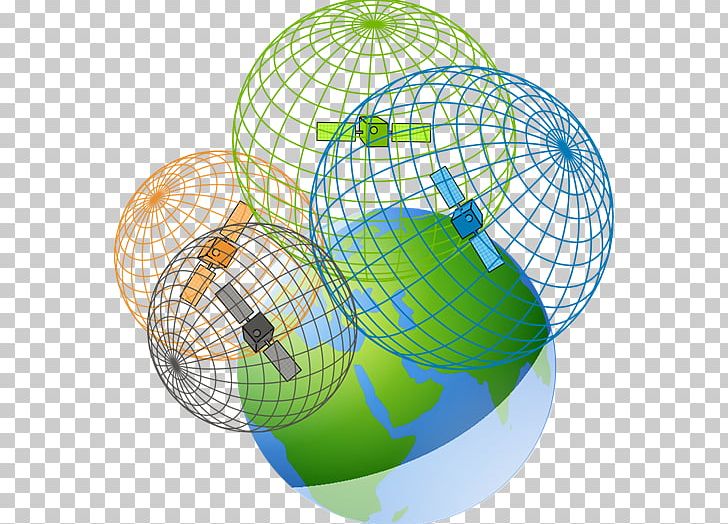GPS Calculations

On the previous page, we saw that a GPS receiver calculates the distance to GPS satellites by timing a signal’s journey from satellite to receiver. As it turns out, this is a fairly elaborate process.
At a particular time (let’s say midnight), the satellite begins transmitting a long, digital pattern called a pseudo-random code. The receiver begins running the same digital pattern also exactly at midnight. When the satellite’s signal reaches the receiver, its transmission of the pattern will lag a bit behind the receiver’s playing of the pattern.
The length of the delay is equal to the signal’s travel time. The receiver multiplies this time by the speed of light to determine how far the signal traveled. Assuming the signal traveled in a straight line, this is the distance from receiver to satellite.
In order to make this measurement, the receiver and satellite both need clocks that can be synchronized down to the nanosecond. To make a satellite positioning system using only synchronized clocks, you would need to have atomic clocks not only on all the satellites, but also in the receiver itself. But atomic clocks cost somewhere between $50,000 and $100,000, which makes them a just a bit too expensive for everyday consumer use.
The Global Positioning System has a clever, effective solution to this problem. Every satellite contains an expensive atomic clock, but the receiver itself uses an ordinary quartz clock, which it constantly resets. In a nutshell, the receiver looks at incoming signals from four or more satellites and gauges its own inaccuracy. In other words, there is only one value for the “current time” that the receiver can use. The correct time value will cause all of the signals that the receiver is receiving to align at a single point in space. That time value is the time value held by the atomic clocks in all of the satellites. So the receiver sets its clock to that time value, and it then has the same time value that all the atomic clocks in all of the satellites have. The GPS receiver gets atomic clock accuracy “for free.”
When you measure the distance to four located satellites, you can draw four spheres that all intersect at one point. Three spheres will intersect even if your numbers are way off, but four spheres will not intersect at one point if you’ve measured incorrectly. Since the receiver makes all its distance measurements using its own built-in clock, the distances will all be proportionally incorrect.
The receiver can easily calculate the necessary adjustment that will cause the four spheres to intersect at one point. Based on this, it resets its clock to be in sync with the satellite’s atomic clock. The receiver does this constantly whenever it’s on, which means it is nearly as accurate as the expensive atomic clocks in the satellites.
In order for the distance information to be of any use, the receiver also has to know where the satellites actually are. This isn’t particularly difficult because the satellites travel in very high and predictable orbits. The GPS receiver simply stores an almanac that tells it where every satellite should be at any given time. Things like the pull of the moon and the sun do change the satellites’ orbits very slightly, but the Department of Defense constantly monitors their exact positions and transmits any adjustments to all GPS receivers as part of the satellites’ signals.
In the next section, we’ll look at errors that may occur and see how the GPS receiver corrects them.
Reference: Howstuffworks.

Be First to Comment